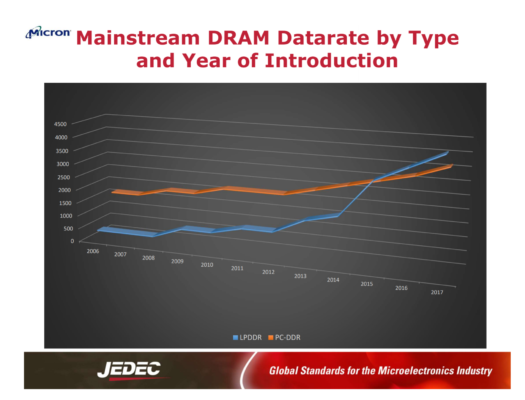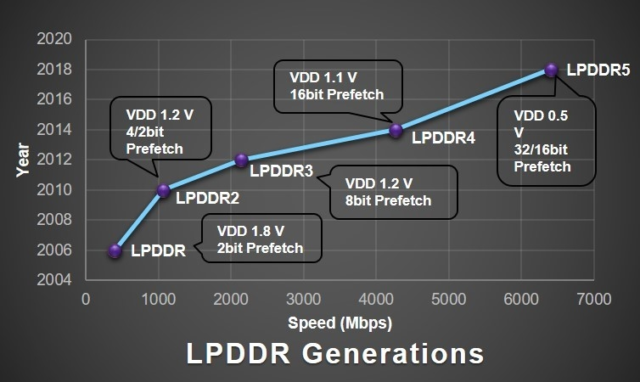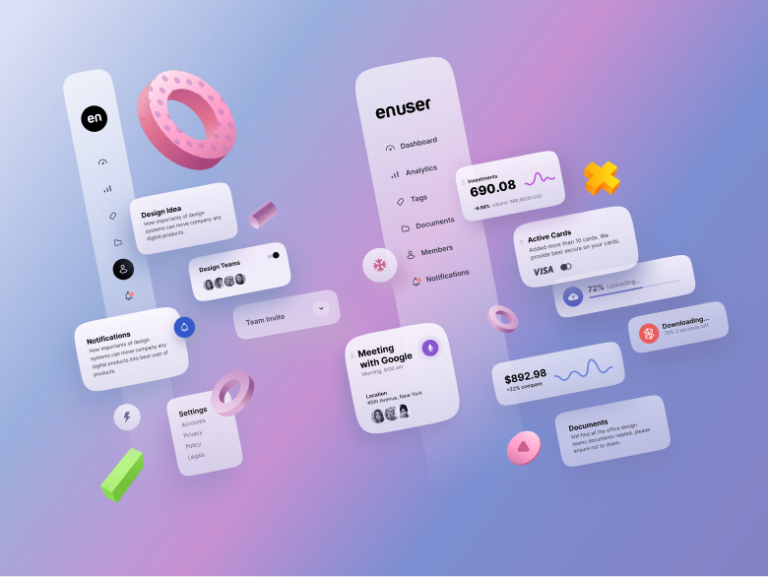What is LPDDR5 memory? – Analysis
This spring, the president of Xiaomi Group conducted a survey on the social network Weibo, in which he asked fans: how much RAM they would like to see in the new flagship Redmi: 8 or 12 GB at the same price. What do you think the fans voted for? For 8 GB. But why? The fact is that Xiaomi offered a choice of 12GB LPDDR4x standard, and 8GB LPDDR5 standard. But what’s so new about this LPDDR5 to make such sacrifices?
Today we will look at RAM standards. Let’s find out how LPDDR differs from DDR. Let’s find out how the new RAM affects the autonomy of devices, helps the development of 5G and saves the lives of drivers!
Memory in mobile devices and computers, as you know, can be divided into two types. Operational: RAM or RAM, and permanent: ROM or ROM. What is the difference?
ROM
Persistent memory is called nonvolatile, that is, ROM can store data without energizing. For example, in flash memory, which is used in smartphones, cards, memory, SSD disks, and so on – the data is stored in CTR cells, that is, cells with a charge trap. These traps are literally capable of locking in a charge and storing them for years. Therefore, the data on the SSD is not erased when you turn off your computer. Also, a ROM device can be called VHS-cassettes with magnetic tape, CDs and even punched cards. In general, everything that can store data for a long enough time.
RAM
On the other hand, random access memory is volatile. That is, it is capable of storing data only with a constant supply of electricity. Why is that? In RAM, every bit of data is stored in a small capacitor. Capacitors have advantages: they can be packed very tightly, and at the same time they can be read and written very quickly.
But there is also a big drawback: capacitors discharge very quickly. Therefore, in order to keep the data, it must be constantly updated. For example, a typical DDR4 module needs to be updated every 64ms.
What kind of random access memory is there? Let’s talk a little about RAM standards.
SDRAM
From 1993 to 2000, the world was ruled by the SDRAM standard – Synchronous Dynamic Random Access Memory: synchronous dynamic random access memory. The standard was great, but there was a drawback, for one cycle SDRAM could receive one command and transmit one data word.
DDR
Therefore, in 2000, DDR memory appeared, which stands for Double Data Rate, that is, literally – double data transfer rate. The name is so cool that it could be called super sneakers. And the coolness is fully justified, because now two write tasks and two read operations were transferred in one clock cycle. This is due to the fact that DDR has learned to transfer data on both parts of the clock signal, both upstream and downstream. Hence the double speed.
It should be said that DDR is not a replacement for SDRAM, but just a special case of it. Therefore, the full name of the standard is DDR SDRAM.
LPDDR
So, DDR memory is fast, great, but since you remember that capacitors need to be constantly recharged, this memory consumes a lot of energy. And if for stationary devices this is a solvable problem, then for mobile devices it is critical. Therefore, in 2006 a new type of DDR memory appeared – LPDDR. It featured a reduced supply voltage from 2.5 V to 1.8 V, hence the name Low Power DDR. The chip area has also been reduced.
How did they manage to save some energy?
Through two hacks:
- At low temperatures, the charge from the memory leaks more slowly, therefore, if the memory is not driven too much, then the refresh intervals of our capacitors can be increased. And so they did.
- Added the Deep Power Down mode and this is not a Ridley Scott film about a helicopter (Black Hawk Down), but just a deep sleep mode, in which absolutely everything is erased from memory (as well as the plot of this film from my memory).
LPDDR development
Naturally, these optimizations had a negative impact on the memory speed. But the standard has evolved rapidly, and now energy efficient memory is in many ways preferable to its older brother.
LPDDR is used in many laptops such as MacBooks, which can save up to 70-90% energy in sleep mode. Moreover, LPDDR5 is already being installed in smartphones (Xiaomi Mi 10, for example). And the first computers on DDR5, at best, will appear only in 2022. Therefore, at the moment, the bandwidth of mobile memory may be higher than its older brother.
- DDR4 2400 DUAL: (2400 x 64/8) * 2 = 38.4 GB / s
- LPDDR5 6400 QUAD: (6400 x 32/8) * 4 = 51.2 GB / s
For example, Samsung’s new LPDDR5 6400 memory can send 51.2 gigabytes of data, or roughly 14 Full HD video files (3.7 GB each) per second.
LPDDR5
But how does LPDDR5 differ from the previous version? Let’s get a look.
LPDDR5 vs LPDDR4x

Let’s start with the fact that the new standard has become 20% more economical: 0.5 V versus 0.6 V. This will extend the life of a smartphone by 5-10% in active use. But in sleep mode it will be possible to save up to 40% energy due to the new deep sleep mode. Now, when your smartphone or laptop is asleep, if you wish, you can completely clear the RAM and unload its contents into non-volatile memory. But in this case, it will take one or two seconds to turn it back on. But you don’t have to worry that the device will gobble up the entire battery when it sleeps.
Dynamic frequency scaling has also been improved. In versions 4 and 4X there was a choice of two operating frequencies, in LPDDR5 there were three options.
The data transfer rate has grown to 6.4 Gbps. This is useful for SuperSlowMotion 960 fps and all sorts of VR applications. And, you will not believe, for work in 5G networks. 5G networks are stupidly faster than modern RAM, can you imagine?
The new RAM standard was developed taking into account the emergence of unmanned vehicles and other devices, in which any failure in the operation of the system is fraught with grave consequences. Therefore, LPDDR5 now supports an additional error correction signal – Link Error Correcting Code (ECC). Therefore, when you take yourself a car with an autopilot, check if there is LPDDR5 there.
There are already tons of smartphones with the new memory. For example, DevCheck shows my OnePlus 8 Pro is charged with 12 GB LPDDR5 2750 MHz with 44 GB / s bandwidth. Not bad.
Other models that already have new memory:
- Xiaomi MI 10 5G
- Redmi K30 Pro
- Realme X50 Pro 5G
- OnePlus 8/8 Pro
- Samsung Galaxy S20 / S20 + / S20 Ultra
- Samsung Galaxy Note 20/20 Ultra
- Samsung Galaxy Z Flip
- Samsung Galaxy Z Fold 2
- Vivo IQOO 3 Pro
- Vivo IQOO 5/5 Pro
- Vivo NEX 3S 5G
- Nubia Red Magic 5S
- Motorola Edge +
- ZTE Axon 10s Pro
But is it worth chasing the very latest RAM in smartphones? I think no. A smartly optimized smart with old memory will work faster and longer.
But if you want a long-lived laptop. I would take a closer look at LPDDR5 models as soon as they hit the market.












